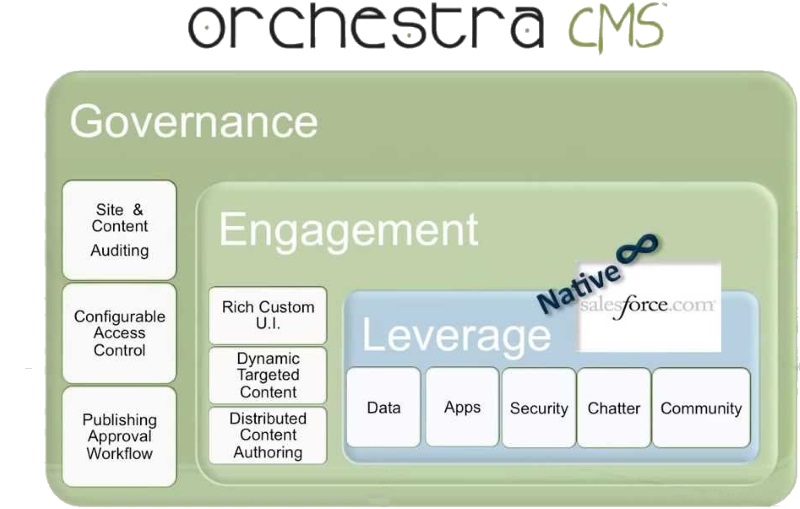Centralized locations on corporate networks for displaying internal information and access to technical resources have been around for decades, using technologies like Lotus Notes and others that predate the Internet. With the rise of the Internet in the mid-1990s, revamping such facilities using web technologies was all the range – and the corporate intranet was born.
Given the early web had little to show for itself but pages with hyperlinks, first-generation intranets were simple portals: pages that took the user to other resources, either internal or external to the organization. But as the name would suggest, portals weren’t destinations themselves. They were simply doorways to other places.
Over time, vendors expanded the capabilities of the portal, with tools like IBM WebSphere Portal and the portal from Plumtree Software – acquired by BEA Systems and eventually Oracle. Microsoft also jumped into the intranet category with SharePoint – a platform that has always been more of a document repository than a portal per se.
Today, many enterprises find themselves with legacy intranets – typically some combination of the web-centric portal and SharePoint. Given the rapid rate of innovation in the digital world, however, these older intranets are now quite long in the tooth.
Collaboration can be difficult. Older intranets are not mobile or tablet friendly. Publishing new content is a challenge. And on SharePoint in particular, content can be difficult to find. It’s definitely time to rework the corporate intranet.
Lightning Strikes the Intranet
Fortunately, many enterprises already have a platform that is ideal for revamping the intranet: Salesforce. Now, with Salesforce’s new Lightning Component Framework, Community Cloud and Salesforce-native content management from Stantive, Salesforce customers have all the elements of a truly modern intranet.
 Lightning provides modular user interface elements much like the portlets that characterized first-generation intranets, only now fully responsive, integrated with all Salesforce capabilities and data, and sporting modern APIs (see my previous BrainBlog post on Lightning).
Lightning provides modular user interface elements much like the portlets that characterized first-generation intranets, only now fully responsive, integrated with all Salesforce capabilities and data, and sporting modern APIs (see my previous BrainBlog post on Lightning).
Collaboration is also built into intranets that leverage OrchestraCMS on the Salesforce platform with Salesforce Chatter, Salesforce’s enterprise social network and collaboration tool.
Perhaps the most powerful aspect of such intranets, however, comes from the modern content management capabilities of OrchestraCMS. Employees across the organization can now easily and securely publish content, even in multiple languages, while collaborating on Chatter.
Consumption of intranet-based content has also undergone a complete revamp. OrchestraCMS provides dynamic personalization, so each employee sees the content they need, how they want to see it, in real-time.
AstraZeneca’s ‘Nucleus’ Corporate Intranet
Pharmaceutical giant AstraZeneca struggled with an out-of-date corporate intranet. As a global firm, their portal was scattered across different countries and different teams, leading to fragmented, difficult-to-find content.
AstraZeneca employees also found content difficult to publish, and the available content on the intranet was often out of date. Collaboration was also a challenge, as this older intranet had no social capabilities, and furthermore, didn’t work well on mobile or tablet devices.
The solution: a new intranet they dubbed ‘Nucleus.’ Built with OrchestraCMS on Salesforce, Nucleus empowered employees around the globe to work together to share content and collaborate socially.
Instead of numerous, fragmented portals, Nucleus is a single global intranet, accessible from any device. Furthermore, it serves content in at least ten different languages, and users can set their own language preferences.
AstraZeneca wanted Nucleus to have a ‘news feed’ feel, and as a result, the intranet functions much like a news site or social media outlet – with frequent updates and collaboration opportunities using Chatter. In fact, hundreds of content contributors create, manage and publish content on Nucleus – all without the involvement of IT.
The Intellyx Take
AstraZeneca’s Nucleus intranet shows that the metaphor of the corporate portal has faded away. Rather than merely a door to content elsewhere, Nucleus is a hub of collaboration, content, and social interaction.
Another essential, yet invisible characteristic of Nucleus is its security and compliance context. Pharma is a highly regulated industry, and how such enterprises manage access to their content is critically important for remaining compliant with a tangled web of international regulations.
First-generation intranets had only rudimentary security controls. IT managers simply put them on the corporate network, expecting firewalls to provide all necessary security – and as for compliance, such intranets rarely offered any capabilities beyond simple access control.
The world has completely changed since simple firewalls were all the security an intranet required. As a global firm, AstraZeneca is scattered across office buildings, labs, and other facilities around the world – and yet, the modern, Salesforce-based infrastructure that runs Nucleus, combined with the content-centric controls of OrchestraCMS are up to the task of providing adequate security and compliance for such modern, digital enterprises.
Copyright © Intellyx LLC. Stantive is an Intellyx client. At the time of writing, none of the other organizations mentioned in this article are Intellyx clients. Intellyx retains full editorial control over the content of this paper. Image credit: Stantive.



